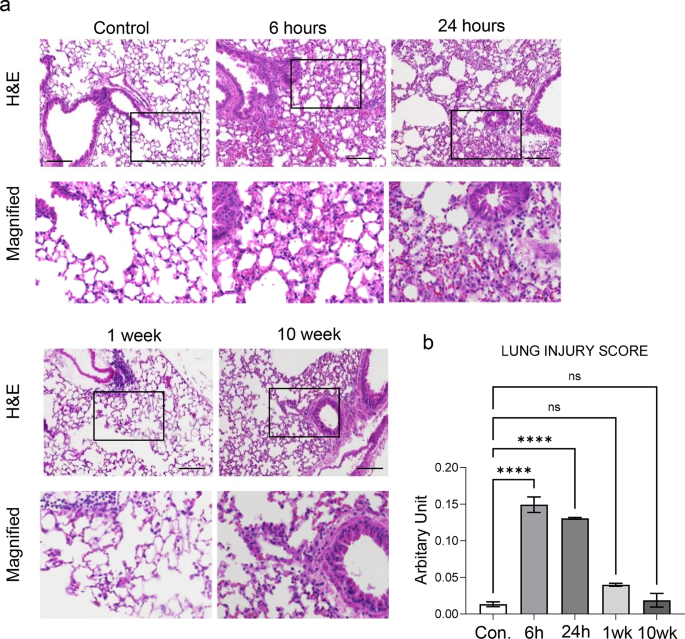The Hidden Culprit Behind Our Health Crisis: It's Not Just One Toxin-It's All of Them
A tidal wave of health conditions is crashing over us, growing more common with each passing year. From autism to obesity, diabetes to depression, the numbers are staggering—and they’ve been climbing sharply since the 1990s.
The answer is rarely a single smoking gun.
Evidence points to the thousands of toxins and other exposures that we’re swimming in every day, from the air we breathe to the water we drink.
Scientific studies often examine one toxin’s role in one illness at a time. That approach tends to mask the fact that multiple exposures are often to blame.
Sometimes the links are clear; other times, they may be murky or debated. But the fact is: real life doesn’t work like a lab experiment. We’re not exposed to just one chemical at a time. We’re hit with a cocktail of them, day in and day out.
To get a clearer picture of what’s going on, I dug into a sampling of health conditions that have exploded since 1990. Then I cross-referenced them with a small sampling of the thousands of toxins and other exposures to look for relationships—proven, suspected, and under debate—that are thought to cause, trigger, or worsen these ailments. The result? A revealing snapshot of how things we add to our environment and bodies might be quietly but insidiously reshaping America’s health.
This original analysis isn’t the full story—far from it. There are hundreds of conditions on the rise and thousands of potential culprits in our surroundings, way more than I could cover here. But even with a limited scope and much debate, patterns emerge. Certain toxins and exposures keep popping up, especially when it comes to hormone-related and immune-related disorders.
The takeaway: It’s rarely about one villain—it’s about the whole toxic brew.
The common medical establishment’s insistence on pinning down a single culprit as “causal” before doctors will acknowledge any link is a smokescreen—one that conveniently hides the bigger picture. And let’s be honest: that’s exactly what some want, especially those who profit from keeping this unhealthy environment chugging along.
As you’ll see in my limited sampling, the same common elements appear over and over again in association with illnesses that have become disturbingly common. The exposures that appear most often are: vaccines, pharmaceuticals in water, PFAS, BPA, phthalates, pesticides, glyphosate, triclosan, mercury, lead, food additives/preservatives/chemicals/dye, and cellphone/microwave/EMF radiation.
Many of these common exposures are known to disrupt our immune systems and hormones. When the exposures are combined, it can magnify the risks. Immune and hormonal disruptions are at the root of many increasingly common diseases and disorders.
You don’t need to be a genius to see that something’s going on. So why haven’t our health experts done this kind of broad, connective analysis decades ago? It’s a red flag they should’ve been chasing long before now. If they’ve done so, it’s not been made public in a way that’s easy to find. And certainly, no public health authorities have acted on any such thing.
But until we seriously start looking at the big picture, we’re missing the forest for the trees.
Each condition lists its prevalence increase or emergence since 1990, followed by a selected sampling of associated toxins known, believed, or theorized to cause, trigger, or worsen the condition.
Note: vaccines are not “toxic” in the classic sense, but for the purpose of this analysis since they contain toxins such as mercury, aluminum, and formaldehyde, and may have toxic side effects in some people, they are categorized under “toxins.”
Trend: 10% to 14% U.S. adults (1990-2020, NIDDK). ~40% rise.
Cadmium (kidney damage, NIH).
Lead (renal, CDC).
Aluminum (nephrotoxin in antiperspirants, warnings for renal patients, FDA).
Glyphosate herbicide (kidney, Sci Rep).
Vaccines (aluminum adjuvants, kidney warnings in inserts, rare renal effects).
Pharmaceuticals in Water (drug residues, including aluminum-containing meds, USGS).
Fluoride (Kidney International, 2006).
Trend: ~25-40% rise (10-15% now, NIH).
Glyphosate herbicide (gut, BMJ).
Food Additives, Preservatives, Chemicals, Dyes (gut irritation, Gut).
Microplastics (inflammation, Sci Total Environ).
Vaccines (gut inflammation, rare reports).
Pharmaceuticals in Water (antibiotics, gut-affecting drugs, NIH 2020).
Triclosan antiseptic: Banned in 2016 from household soap but remains in high concentrations in toothpaste and other consumer products. (gut microbiome disruption, Sci Transl Med, 2018).
Trend: ~30-50% rise (Neurology 2020).
Pesticides (General) (paraquat, Neurology).
Manganese (neurotoxic, NIH).
Trichloroethylene solvent (EPA-banned in 2024 but effective date postponed. neuro, Environ Health).
Vaccines (rare neuro effects, unstudied).
Pharmaceuticals in Water
Trend: ~50% rise (1.5 to 2.3 per 100,000, SEER).
PFAS (endocrine, ATSDR).
Phthalates in plastics (hormone, NIH).
Pesticides (General) (cancer, Lancet Oncol).
Vaccines (immune-cancer theory).
Pharmaceuticals in Water (hormone related).
Trend: ~25-35% rise (12% to 15%, Headache Society).
VOC Emissions (trigger, NIH).
Food Additives, Preservatives, Chemicals, Dyes (MSG, Neurology).
Pharmaceuticals in Water (SSRIs, analgesics, Headache Society 2020).
Vaccines (post-vax headaches, VAERS).
Trend: ~25-40% rise (SEER).
Vinyl Chloride (carcinogenic, EPA).
Pesticides (General) (neuro cancer, Lancet Oncol).
Cellphone/Microwave Radiation/EMF (cell phones, IARC).
Vaccines (rare neuro-cancer link, unstudied).
Pharmaceuticals in Water (cancer causing drugs).
Trend: ~30-50% rise (5-8% now, ATA).
PFAS (thyroid, EPA).
Perchlorate (thyroid, NIH).
Pharmaceuticals in Water (hormone disruptors).
Fluoride (thyroid, Environ Health).
Vaccines (On label of HepB, rare thyroid immune response, unstudied).
Trend: Emerged notably; ~0.5-1% (Urology).
Food Additives, Preservatives, Chemicals, Dyes (bladder irritation, Urology).
PFAS (inflammation, ATSDR).
Pharmaceuticals in Water (bladder, USGS).
Vaccines (immune inflammation, rare reports).
Pharmaceuticals in Water (analgesics, irritable drugs).
Trend: ~50% rise (3% to 4.5%, Arthritis Foundation).
Lead (uric acid, NIH).
PFAS (metabolic, JAMA).
High Fructose Corn Syrup (uric acid, Arthritis).
Pharmaceuticals in Water (metabolic drugs).
Trend: ~25-40% rise (NIH).
Silica Dust (immune, OSHA).
Beryllium production metal (lung/immune, NIH).
Vaccines (rare immune trigger, unstudied).
Pharmaceuticals in Water (immune-related drugs).
Trend: ~25-30% rise (10-12% now, CDC).
VOC Emissions (sinus irritation, NIH).
Air Pollution (respiratory, WHO).
Vaccines (rare sinus inflammation, VAERS).
Pharmaceuticals in Water (antibiotics, etc., CDC 2020).
Trend: ~30% rise (10-15% adults, ATA).
Lead (neurotoxic, NIH).
Noise Pollution (hearing, NIH).
Mercury (ear nerve, NIH).
Pharmaceuticals in Water (antibiotics, ATA 2020).
Vaccines (rare neuro effects, VAERS).
Trend: ~25-40% rise (CDC estimates).
Air Pollution (inflammation, Pediatrics).
Pesticides (General) (immune trigger, Environ Health).
Vaccines (case reports, studies re: pneumococcal conjugate and rotavirus vaccines).
Trend: ~25-50% rise (0.5-1% now, NIH).
Cellphone/Microwave Radiation/EMF (trigger, Derm Society).
PFAS (immune, ATSDR).
Mercury (skin, NIH).
Vaccines (autoimmune trigger, rare reports).
Pharmaceuticals in Water (immune-related drugs).
Trend: Emerged; ~1-17% in some cohorts (J Allergy Clin Immunol).
Food Additives, Preservatives, Chemicals, Dyes (histamine, J Allergy).
PFAS (immune, ATSDR).
Vaccines (mast cell overstimulation, allergy lit).
Pharmaceuticals in Water (allergenic or immune drugs, J Allergy Clin Immunol, 2020)
Triclosan antiseptic: Banned in 2016 from household soap but remains in high concentrations in toothpaste and other consumer products. (immune sensitization, J Allergy Clin Immunol, 2020).
Trend: ~50-100% rise (0.02% to 0.04%+, Gastroenterology).
Food Additives, Preservatives, Chemicals, Dyes (gut, Gut).
Glyphosate herbicide (inflammation, BMJ).
Microplastics (gut, Sci Total Environ).
Vaccines (immune inflammation, rare reports).
Pharmaceuticals in Water (antibiotics or allergens, Gastroenterology 2020).
Triclosan antiseptic: Banned in 2016 from household soap but remains in high concentrations in toothpaste and other consumer products. (gut inflammation, immune changes, Gastroenterology, 2020).
Trend: ~25-40% rise (5-10% now, NIH).
Mercury (nerve, NIH).
Pesticides (General) (neuro, Neurology).
Debated Toxins:
Vaccines (rare neuro effects, unstudied).
Weakly Plausible Toxins:
Pharmaceuticals in Water (neuroactive drugs).
Hyperhidrosis Excessive Sweating (Poss. Immune-Related)
Trend: ~25-50% rise (3-5%, Derm Society).
Plausible Toxins:
BPA in plastics, resin (endocrine, NIH).
PFAS (autonomic, ATSDR).
Debated Toxins:
Vaccines (rare autonomic effects, unstudied).
Weakly Plausible Toxins:
Pharmaceuticals in Water (hormonal related).
PANDAS
Trend: Emerged post-1990 (NIMH).
Plausible Toxins:
PFAS (immune, ATSDR).
Debated Toxins:
Vaccines (immune-neuro trigger, VICP cases).
Weakly Plausible Toxins:
Pharmaceuticals in Water (antibiotics).
Vulvodynia (Poss. Immune-Related)
Trend: ~25-40% rise (3-7% women, NIH).
Plausible Toxins:
Phthalates in plastics (hormone, NIH).
PFAS (inflammation, ATSDR).
Yeast (irritation, NIH).
Vaccines (immune inflammation, rare reports).
Weakly Plausible Toxins:
Pharmaceuticals in Water (irritant drugs).
Hidradenitis Suppurativa Inflammatory Skin Condition (Poss. Immune-Related)
Trend: ~50% rise (0.1% to 0.2-1%, JAMA Derm).
Plausible Toxins:
BPA in plastics, resin (hormone, NIH).
Phthalates in plastics (endocrine, NIH).
Smoking (inflammation, Derm Society).
Vaccines (immune inflammation, rare reports).
Weakly Plausible Toxins:
Pharmaceuticals in Water (hormone related).
Top Toxins/Exposures and Number of Associated Conditions on Our List







